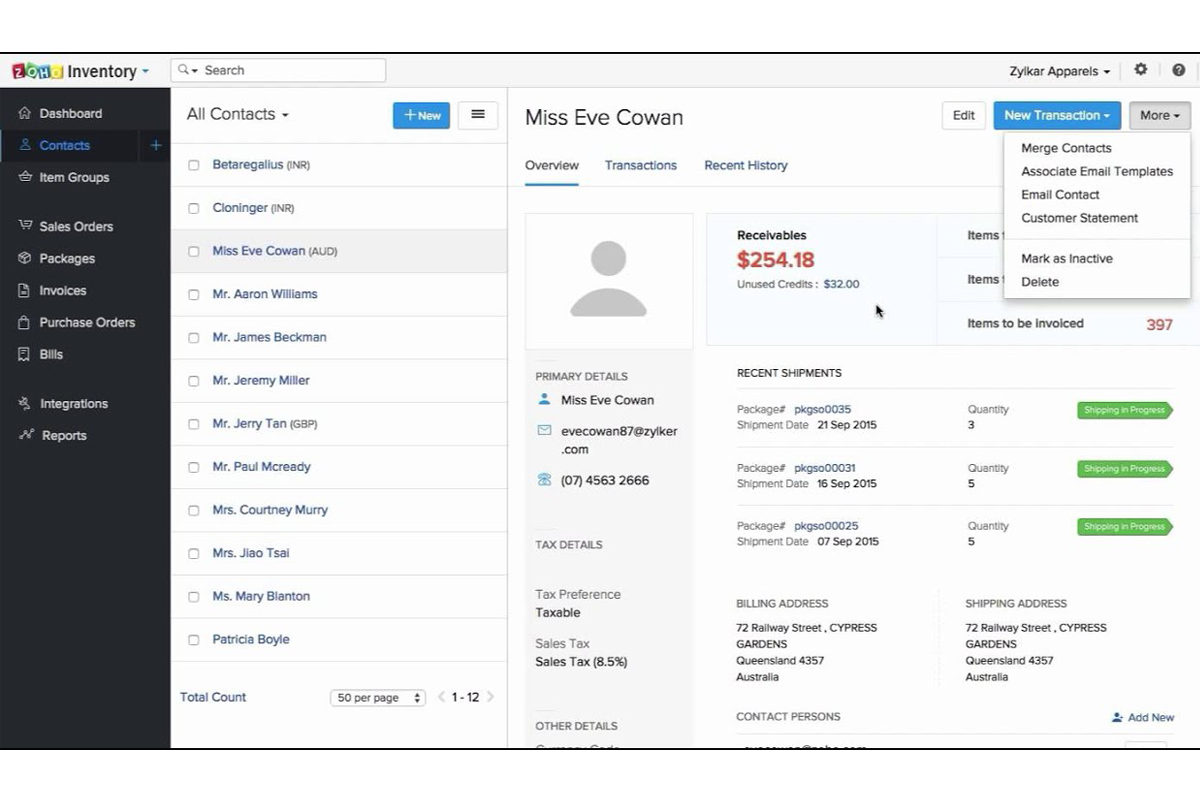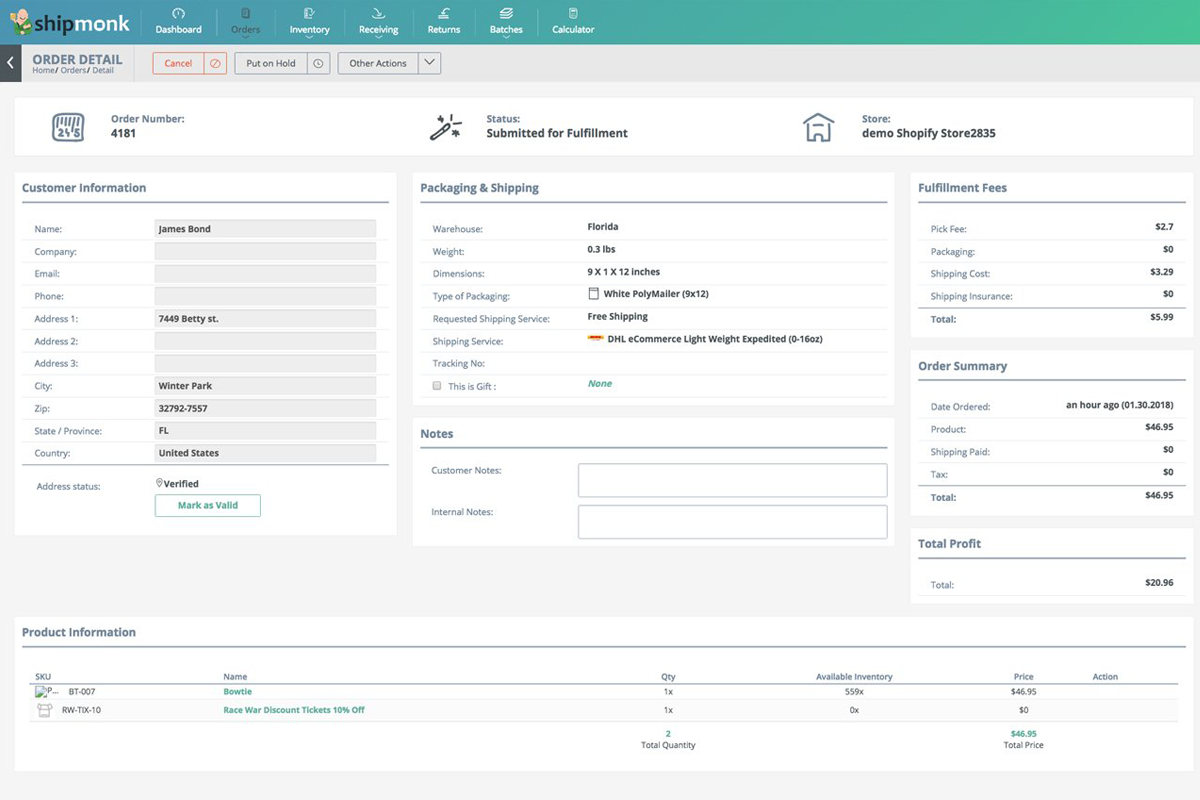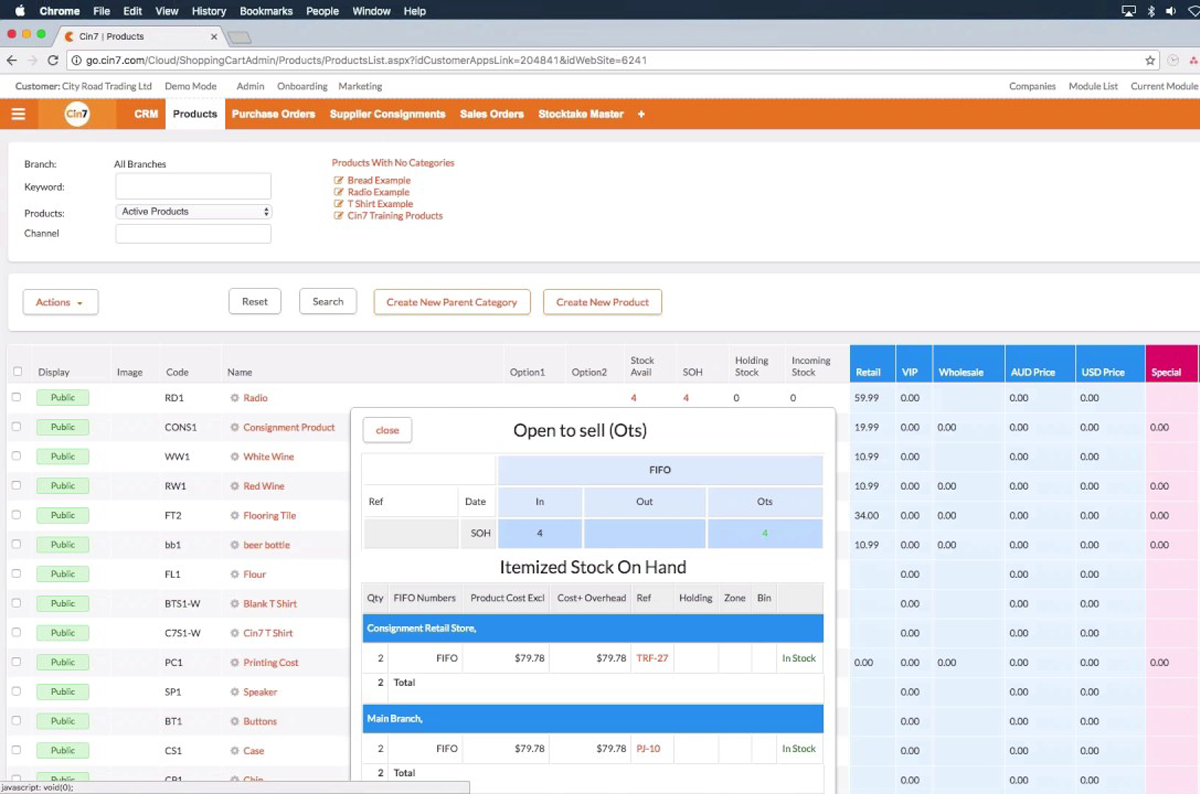Dealing with a multitude of orders is no cakewalk if a company does not have the right order management tools for the job. There’s nothing wrong with using a spreadsheet, but when the number of orders bulks up, listing down all the details suddenly becomes a mind-numbing experience. A mistyped figure or a single misplaced decimal point could spell disaster for the company’s reputation. And news about poor service spreads like wildfire, thanks to social media.
A simple error in taking in information affects the remaining processes in the order cycle. The wrong product or an incorrect number of items could be sent to the customer. This will lead to a customer complaint as well as negative remarks on social media and comparison sites. Remember, we’re talking about only one customer here. Imagine if such an error occurs in dozens of orders.
The logical solution to this scenario is to find software that expands the capabilities of spreadsheets, taking into account all the processes in the ordering cycle. Of course, not all platforms are ideal, so a bit of research would be necessary. Moreover, the requirements of businesses tend to vary even if they’re in the same industry. So, what you would want is a solution flexible enough to take in various business models. Good thing such platforms are in abundance.

Table of Contents
- What is Order Management Software?
- List of Best Order Management Software
- How Does an Order Management System Work?
- Types of Order Management Systems
- Order Management System Benefits
- Key Order Management Software Features
- Potential Issues of Order Management Systems
- Factors to Consider in Getting Order Management Software
- Order Management System Trends
- Should You Purchase an Order Management System?
What is Order Management Software?
An order management software allows you to streamline the entire order cycle, from noting down order information to the shipment of goods. It reduces the likelihood of errors and cuts down the time in each stage of the cycle. With the system consolidating all the data, users can see the availability of stock, find trends in past orders, view shipping information, and update product prices as needed. The platform is ideal for retailers, manufacturers, wholesalers, and suppliers.
Order management software is used by each segment of the supply chain, with the information visible throughout the whole process. Fulfillments are planned even before they occur, which helps in making the order cycle simpler and more efficient. Normally, the system accounts for multiple locations and users.

Record customer information
List of Best Order Management Software
- Zoho Inventory: Zoho is a full-featured inventory and order management software that allows users to manage orders and company inventory. The platform provides omnichannel sales, along with useful integrations, and gives a clear view of an order’s delivery status. Its warehouse management module ensures that users are on top of their stock at all times, coupled with a reporting feature that offers insights.
- TradeGecko: This order management software fluidly integrates the whole order cycle and supports multiple locations. The platform syncs order info with inventory data and fits in the entire workflow within the system. Reports can be accessed in real-time while allowing users to create sales orders remotely.
- Cin7: Cin7 is a fully integrated order management platform designed for multichannel retailers. The software creates order within the workflow through the seamless integration of sales channels. It also ensures that the inventory tallies with the orders processed.
- Shipmonk: Shipmonk is an order fulfillment software that offers comprehensive solutions for transaction management, warehouse management, and shipping management. It is equipped with an order tracking function and a built-in calculator to account for shipping fees. Moreover, users can manage items from multiple warehouses through the system.
- CloudSense: CloudSense’s order management platform simplifies the order cycle through its built-in templates. Users can simply drag and drop boards to simulate and streamline the workflow. Also, transactions are duly categorized, adding more detail within the communication channels.
- Caseblocks: A robust business process management software, Caseblocks offers the ability to create and customize workflows and teams. It lets users manage orders in real-time and integrates with various sales channels. Also, it can send out automated email updates to keep customers in the loop.
- Stock&Buy: Stock&Buy is a powerful inventory management software used by multichannel enterprises. This platform consolidates inventory information across various channels and syncs order data. Meanwhile, its order management function optimizes the order cycle for quicker fulfillment.
- Multiorders: This multichannel inventory and order management software affords users a wide array of ecommerce tools. On top of that, the platform lets users merge orders that came from one customer and accommodates bulk shipping. Multiorders connects various stores and helps organize the inventory.
- Orderhive: Orderhive is a popular order management software that provides comprehensive solutions for each stage of the order cycle. Built with a ton of features, the platform consolidates order and tracking info in one place. It simplifies every process by leveraging Kanban boards as well as offering online and offline order syncing, all within an easy-to-navigate interface.
- IBM Sterling Order Management: This order management system tracks down order information, from customer requests down to shipping information. The platform lets users manage every aspect of the supply chain, including aftersales services. It also aids with scheduling to make sure that every order is delivered and received on time.
How Does an Order Management System Work?
Imagine going through the order cycle without the need to travel or call different departments of your business. An order management system streamlines the entire ordering operation. This accounts for all customer touchpoints, including transactional information, order processing, inventory management, and monitoring deliveries. The platform’s users include top managers and teams in sales and marketing, CRM, warehouse and logistics, accounting, and IT.
Since everyone in the network has access to the system’s tools, the flow of data is visible throughout each stage of the supply chain. Managers can assign tasks to specific personnel to alert them of their deliverables. Likewise, the platform can be set to send email updates to customers. This speeds up the entire process, reduces errors, and keeps customers informed on the state of their orders.
Some systems have the ability to find trends from historical information and deliver valuable insights to users. So, in effect, companies have the potential to improve their performance over time.

Manage your inventory
Types of Order Management Systems
Although order management systems carry the same basic features, some come as standalone programs while others are functions of larger systems such as ERPs or inventory management systems.
- Standalone order management systems – Standalone systems are dedicated to order management but branch out to other areas of the order cycle like inventory, warehouse, and shipping management.
- Order management modules – Order management is an integral component of retail and manufacturing, thus it is included as a function of comprehensive business platforms.
Companies that require all-encompassing business solutions are better off with business process management software since it addresses all of their needs. On the other hand, companies with existent business systems will benefit more from having a standalone program. This beefs up their systems’ overall functionality.
Another notable difference between order management systems is their deployment. Some are on-premise platforms while others are SaaS or cloud-based.
Order Management System Benefits
It’s been established that an order management system streamlines the order cycle. How it exactly fosters efficiency is what we will tackle here. The platform has a profound effect on various aspects of the supply chain and customer experience. And a lot of it has to do with internal and external integrations.
Seamless integration
From data collection to processing orders, the system fluidly links every concerned department to the order cycle. As a result, costly errors and delays are avoided. Most systems also integrate with a slew of ecommerce applications in case a company needs more sales channels.
Data visibility
The info concerning orders is highlighted throughout the entire process. In this way, users can easily pull up tables or charts linked to the database in processing orders. This limits the likelihood of warehouse staff picking up the wrong items or packing an incorrect amount of goods.
Optimized inventory
The inventory should always tally up with the amount of stock on hand before and after an order has been fulfilled. And an order management system makes sure that this is the case. Companies can manage customer expectations in the event a product is sold out or inform them if stocks are limited.
Order insights
Some systems can identify trends in the data and generate insights from them. With this, users can learn more about the demand for each product over time. They can allocate more suitable amounts of each product line sold based on the demand.
Stress-free deliveries
Order management does not end with the payment of orders. The ordered items must make it to their intended recipients. For this reason, most systems allow users to monitor the shipment status of orders. This information can also be shared with customers to guarantee their peace of mind.
Satisfied customers
With the system optimizing the order cycle, customers get to enjoy fast and error-free orders. Satisfied people can easily turn into loyal customers. And news about the company’s efficiency can quickly spread online. This bodes well for the company’s profits in the long run.

Track down shipped orders
Key Order Management Software Features
Order management system features largely revolve around internal and external integrations. The internal ones ensure that transactional data is processed smoothly, reaching all the right parties in a timely manner. On the other hand, the external ones boost a company’s digital capabilities, such as adding sales channels or direct links to courier services.
Platform integration
The platform integrates all concerned departments, creating an unimpeded stream of transactional information that anyone in the network can access at any time. Externally, the system can link up with an assortment of useful apps for business, deliveries, and inventory management.
Dynamic payment processing
Payments can be made online across multiple currencies, vendors, locations, and credit cards. This can come as a built-in feature or an external integration.
Transaction management
Transactional information is recorded and categorized on a database, which can be accessed by everyone on the office network. This allows sales offices to correctly process orders and the warehouse staff to send out the correct items on time.
Inventory management
This feature lets the system update the inventory when an order has been placed, an item was returned, or stock has been replenished. With this, the company is always on top of the number of goods on hand.
Shipping management
With this feature, companies can monitor the state of deliveries, whether the items have been delivered, are in transit, or still in the hands of the courier. This eliminates guesswork in the event of delays.
White label solutions
Branding is essential to any line of business. And this feature ensures that the items delivered follow the company’s branding initiatives. Various customizable design templates are available on many order management platforms.

Your warehouse at your fingertips
Potential Issues of Order Management Systems
Outside the lens of retailers, the order cycle might appear as a simple process, completed in a matter of a few clicks and key presses. But at the backend of that quick procedure is a network of tasks that touches on several company departments. The breadth of work involved is one of the main sources of order management system problems. Some concerns revolve around the lack of functionality while others point to the need for better cooperation from remote team members.
- Lack of necessary functions. Most platforms have a full set of basic features, but some might not cover everything that the company does, say, operations across multiple locations. There are also cases when a system would need added functionalities but doesn’t support third-party integrations, such as apps for warehouse management or accounting. This limits the support offered, thus creating an output imbalance within the workflow.
- Not everyone is using the software accordingly. For the software to act as a hub of activities, everyone must leverage its functions and record data in its database. In the office, things are easy, since people are accustomed to technology and training can be performed at any time. However, in remote locations like warehouses, employees might not be savvy enough to find comfort in using the platform. This can cause errors or delays if not addressed.
- Lack of software updates. Operations change over time. What’s useful now might be lacking when the company has scaled up. This means that the software must also evolve with its users, with updated features and added functionalities every once in a while. Not doing so will just make it a liability in the long run.
- Not providing enough training. Every software bears a learning curve. So, before changes are rolled out, the company’s staff must know how to leverage the platform’s features. Some businesses disregard the need for training, causing costly errors and delays that could have been avoided.
- Deployment errors. Systems applied to new environments tend to suffer from a lot of deployment errors. Mistakes such as missing files, wrong configurations, and misused or unused features are likely to occur during the adjustment period. It’s advisable to have a system that fully automates operations so that these errors won’t happen too often.
Factors to Consider in Getting Order Management Software
Order management platforms weren’t made equal, which is why some perform better than others under the same set of conditions. There are tons of order management programs on the market, so here are some of the things you should consider before getting one:
- Ideally, a platform should support multiple locations, especially for companies that work with more than one warehouse.
- The software should automate operations to limit manual processes, which are prone to human error.
- It should accommodate sales across multiple channels and currencies.
- A platform that generates reports and provides insights reduces manual work and improves operations.
- Integration with third-party apps expands the system’s capabilities.
- The developer should constantly update the software since business objectives change over time.
- If needed, an API-based platform can be modified to fit a company’s special needs.
Order Management System Trends
With more and more companies embracing automation, developers of order management systems are in a race to innovate the solutions that they provide. After all, their products’ users are constantly searching for ways to gain a larger share of the market. This leads to potential upgrades that can affect the entire order management system landscape.
Predicting orders
Currently, order management systems are able to generate insights based on the data. The next step would be to gain the ability to predict orders even before they occur. Of course, there will be oversights in using this feature, but it would help users stock ample amounts of goods at all times. This would allow retailers to avoid stockouts when the demand for particular items is high.
Warehouse robotics
Even with an automated system, gathering ordered items in a warehouse entails a lot of work. This can pave the way for the use of robots in handling inventory. Robots don’t tire out and the location of each product is stored in its memory, so time is maximized when picking out goods. Using robotics also reduces the rate of injuries and salary costs.
Faster pre-fulfillment processes
Some sporting goods companies have adopted faster pre-fulfillment processes, which led them to halve the time of fulfillment. Nike, for instance, modified its supply chain to produce jerseys at a much faster rate than it normally does. Other industries would likely follow, which, in turn, influences the framework of upcoming order management software.
The use of blockchain technology
Blockchain technology isn’t limited to powering currencies. In fact, it can be leveraged to add transparency to transactions, allow the recording of real-time data, and provide a boost to digital security. Much of its true capabilities have yet to be explored. And an ideal starting point happens to be supply chain systems, including ones for order management.
Better solutions for returned inventory
As online shopping further increases in popularity, the rate of returned goods grows higher. Research suggests that only 49% of retailers offer free shipping for returned items. This signals the need to create better solutions for such. Platforms can be engineered to track the movement of returned items from the customer back to the warehouse and label them accordingly. Moreover, they can be programmed to find deals that would entail free return shipping.
Should You Purchase an Order Management System?
Picking an order management system isn’t as easy as settling for what’s popular. The order cycle covers every aspect of a company’s supply chain, so you have to keep in mind the chain’s structure and the system’s users. Not all systems are agile enough to accommodate your needs. This means selecting from a list of viable platforms would require a bit of reading into the features.
That said, once you have a platform that addresses your business needs, it can significantly shorten the lead times of the pre-fulfillment stage and make the overall experience more painless for both you and your customers. You can be on top of every transaction as well as other parts of your supply chain, such as production/sourcing, inventory, and shipping. With speed comes profits and more time to innovate on your goods or services. At the end of the day, you can look at the platform as a virtual manager that can help you scale the ranks of your industry.
There is a lot of free order management software available as well as those that require fees. Rather than focus on the price, a better determinant is a platform’s functionalities and how they fit with your supply chain. Find a good match and it won’t take long before the system makes a difference in your operations.
